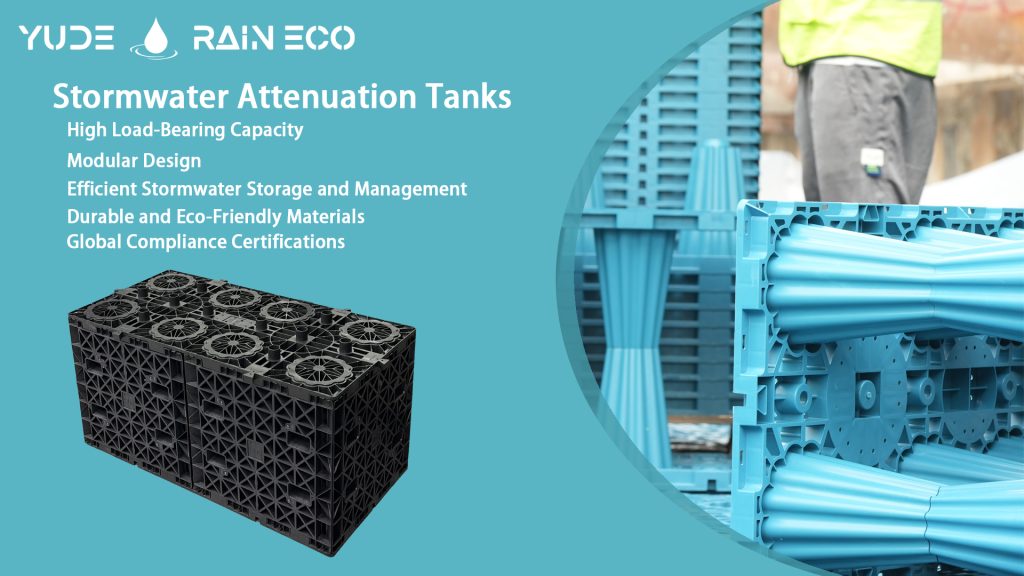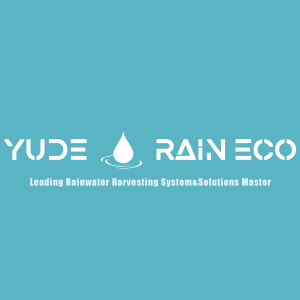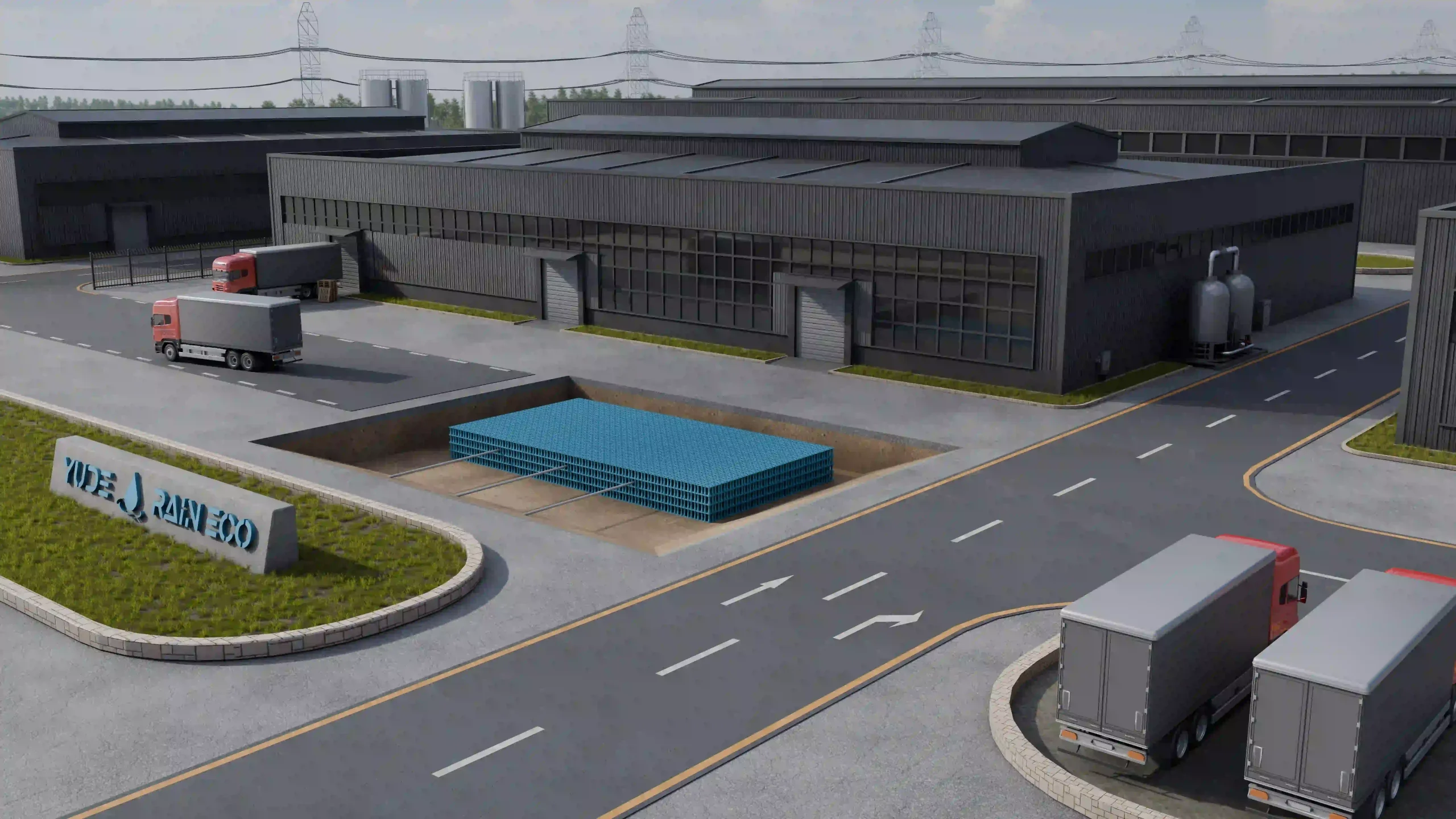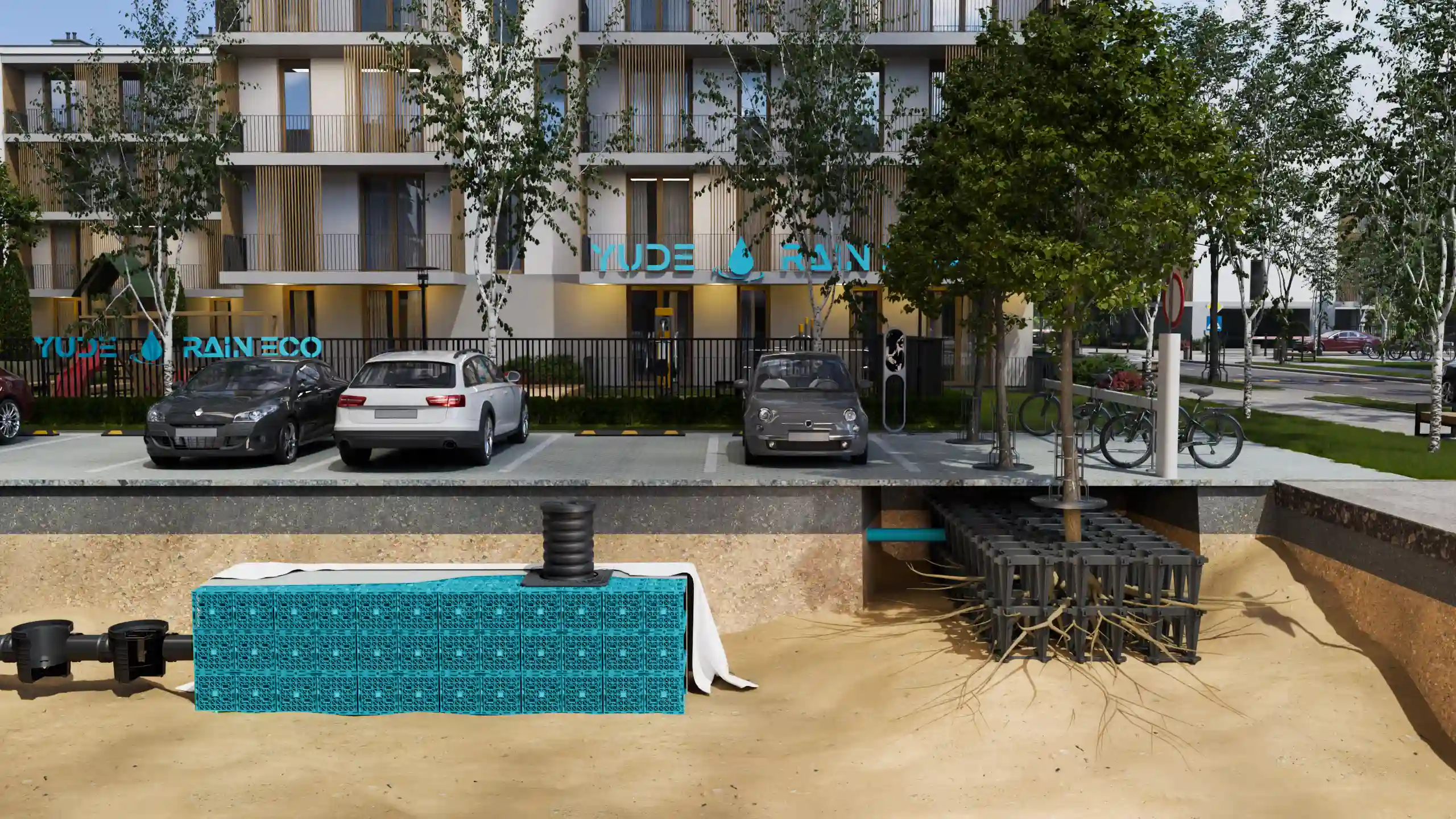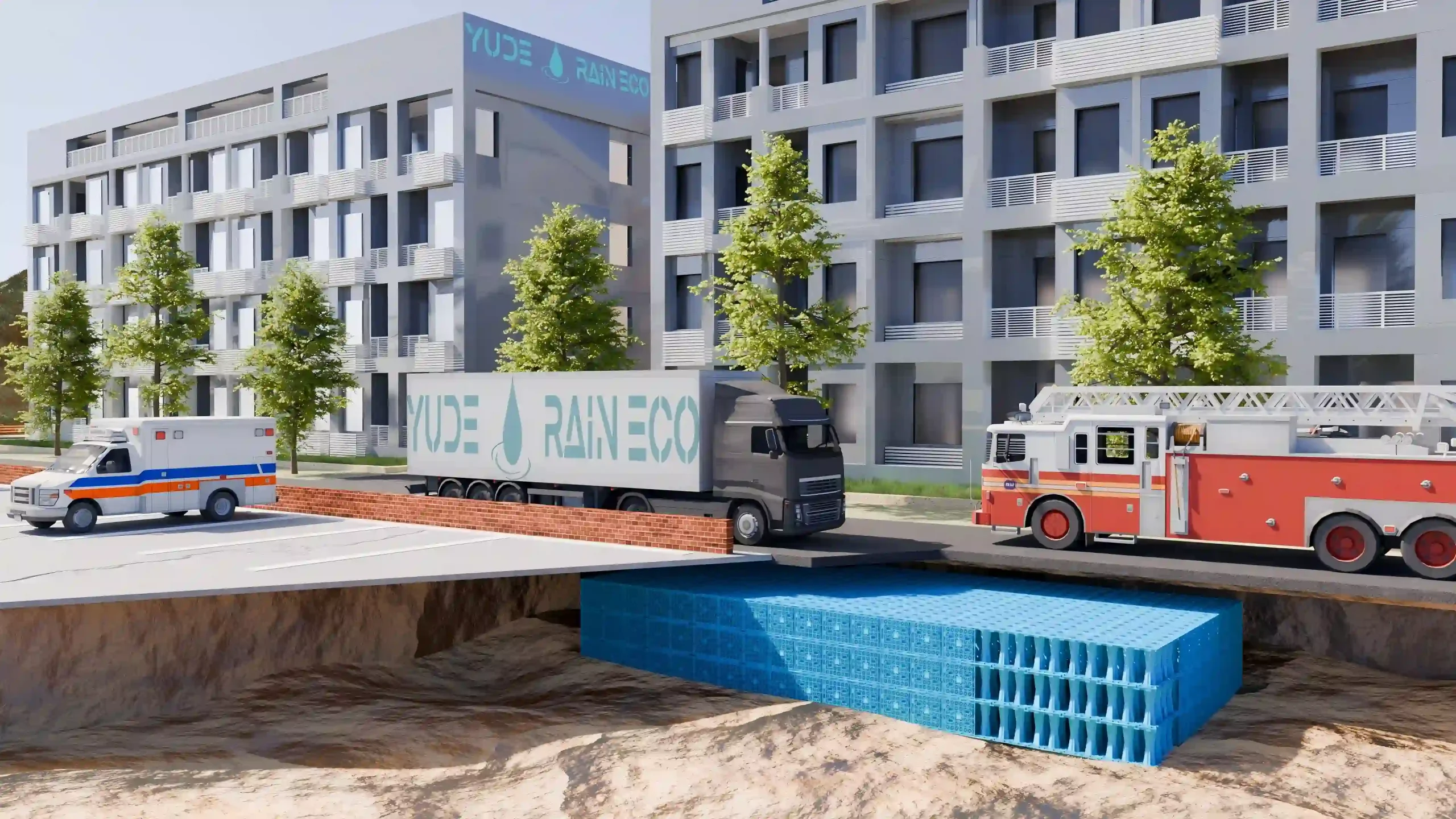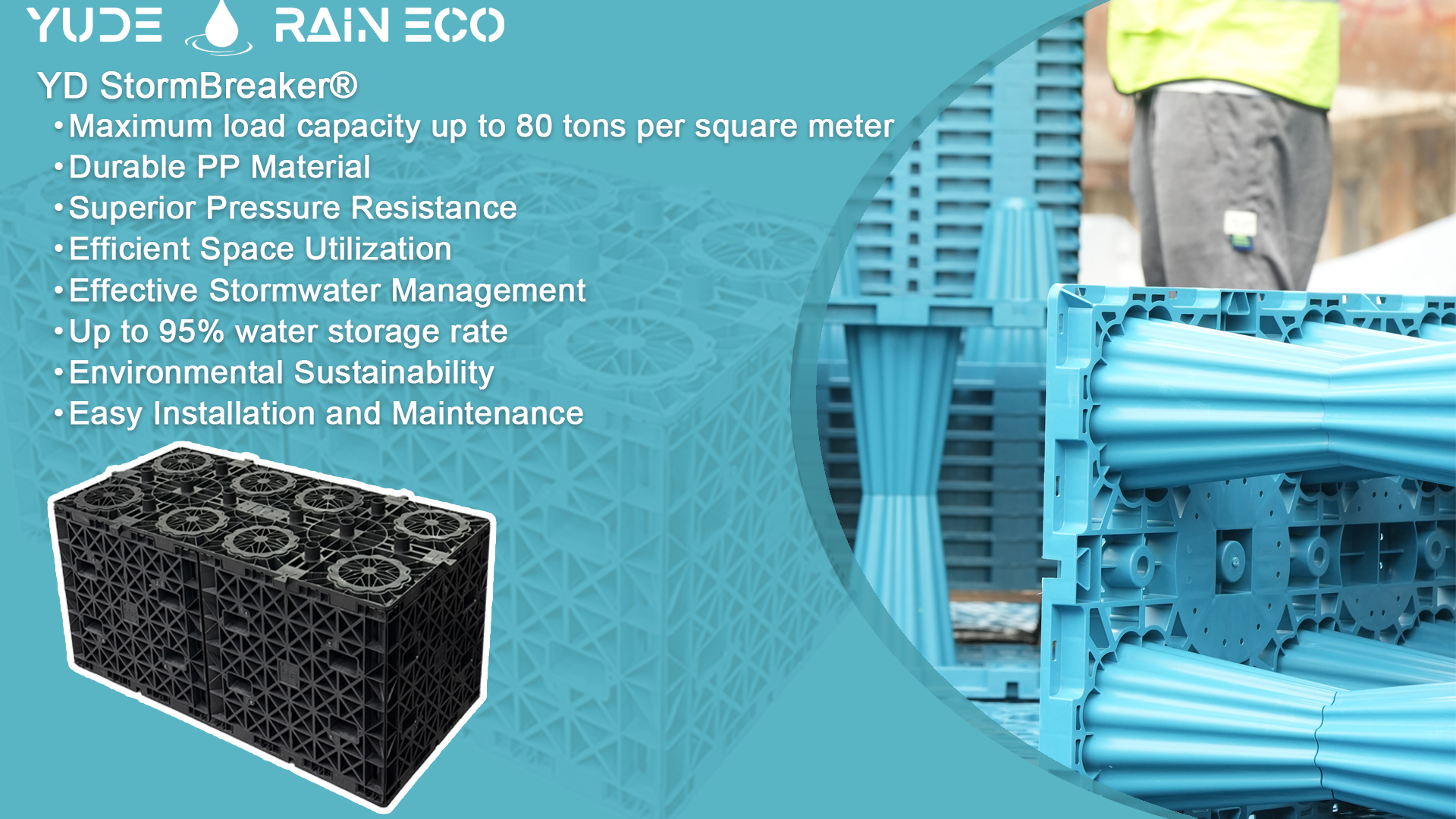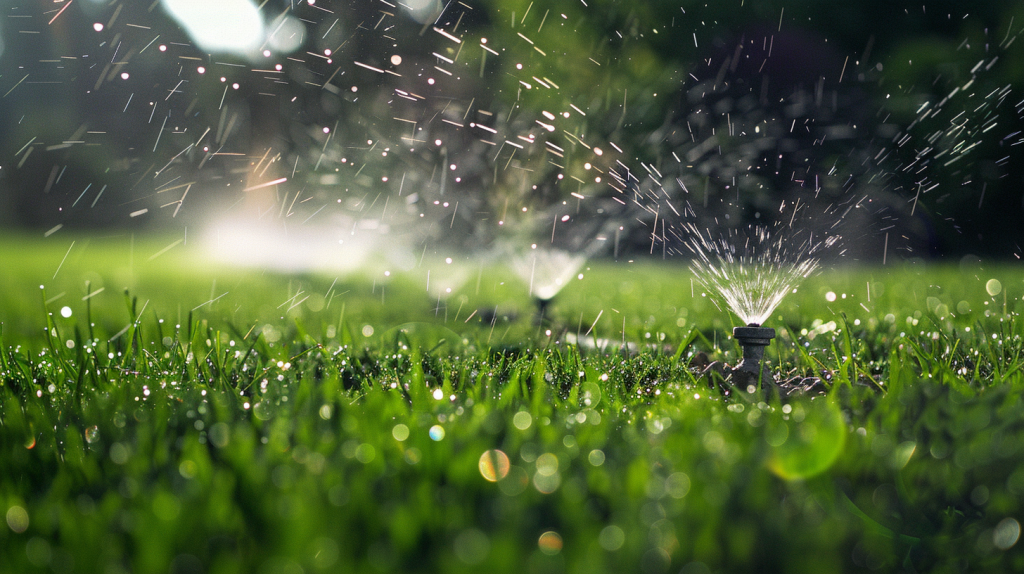Introduction
As global water scarcity becomes one of the most urgent environmental and economic challenges of the 21st century, innovative solutions like Rainwater Collection Systems are emerging as practical, scalable, and sustainable responses. According to the United Nations, nearly 2 billion people worldwide already live in water-stressed areas, and by 2050, global water demand is expected to rise by 55%. Rapid urbanization, population growth, and climate change only intensify this challenge.
In this context, rainwater collection systems are gaining momentum across residential, commercial, industrial, and municipal sectors. They provide dual benefits: reducing dependency on municipal water supplies while mitigating flooding risks caused by stormwater runoff.
Yude Rain Eco specializes in designing and implementing advanced rainwater harvesting and stormwater management solutions, including rainwater collection tanks, rainwater capturers, geocellular attenuation/storage tanks, and underground rainwater harvesting systems. Our mission is to help cities, businesses, and households conserve water, save costs, and build resilience against climate uncertainty.
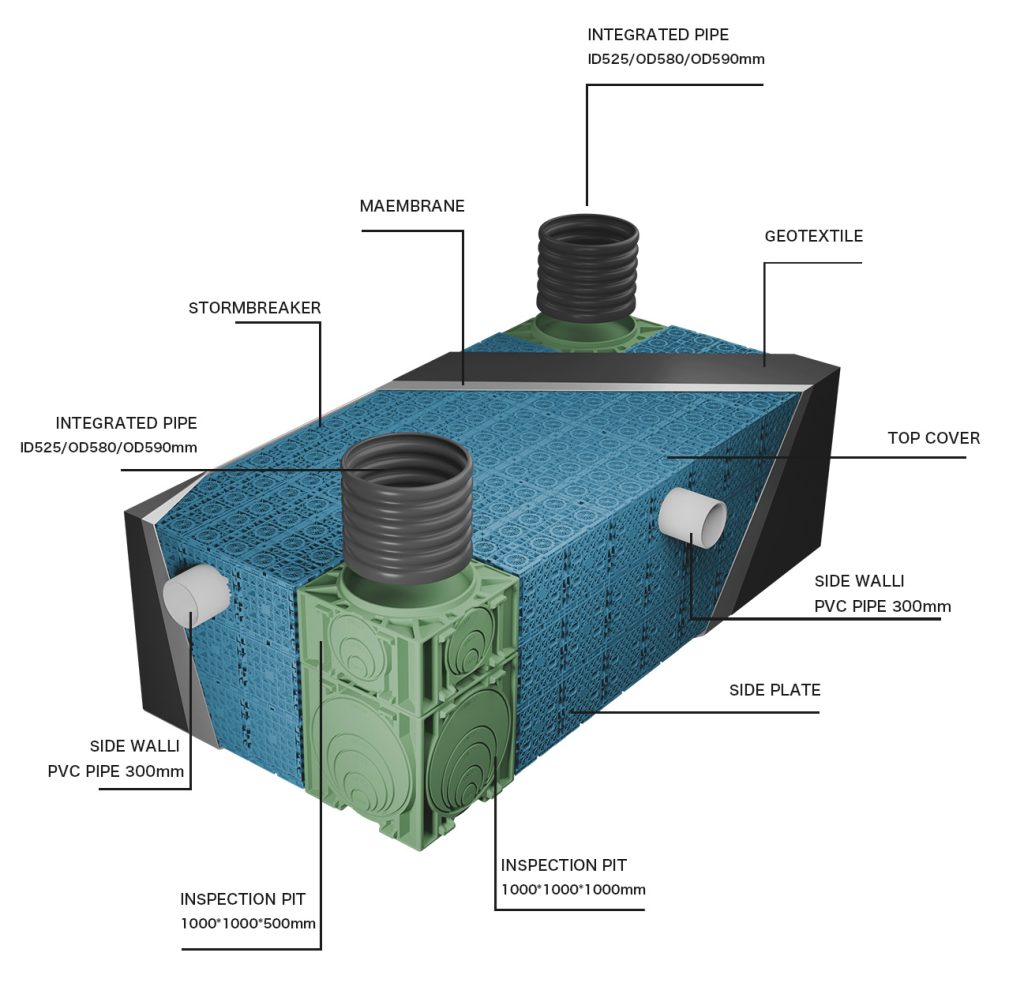
What Is a Rainwater Collection System?
A rainwater collection system (also called a rainwater harvesting system) is an engineered solution that captures, stores, and reuses rainwater for various applications. While traditional systems involved simple barrels under rooftops, today’s advanced systems integrate filtration, underground storage tanks, and smart monitoring technology.
Key Components of Rainwater Collection Systems
-
-
Catchment Area
-
Usually rooftops, paved surfaces, or other impermeable structures.
-
In urban projects, engineered catchments are often integrated into building design.
-
-
Gutters and Downspouts
-
Channels that direct rainwater from catchments into filtration units or tanks.
-
-
Filtration Units
-
Remove debris, dust, leaves, and contaminants.
-
Advanced options include sand filters, mesh filters, UV purification, or first-flush diverters.
-
-
Storage Tanks
-
Above-ground tanks: Cost-effective, easy to install.
-
Underground cisterns or geocellular attenuation tanks: Save space, protect water from sunlight and evaporation, ideal for urban projects.
-
-
Distribution Network
-
Pumps, pipes, and delivery systems ensure rainwater reaches intended applications (irrigation, cooling towers, toilet flushing, laundry, or even potable use after treatment).
-
-
Why Invest in Rainwater Collection Systems?
1. Reduce Water Bills
Rainwater is free. A single household with a 1,000 sq. ft. roof can collect 600–1,000 gallons from just one inch of rainfall. Businesses can reduce 30–50% of their municipal water consumption by using rainwater for cooling towers, landscape irrigation, or sanitation.
2. Mitigate Urban Flooding
Cities with large impermeable areas (roads, parking lots, rooftops) are highly vulnerable to flooding. Stormwater attenuation tanks, such as Yude’s YD StormBreaker® systems, temporarily store excess runoff underground, easing pressure on municipal drainage systems and preventing flash floods.
3. Conserve Water Resources
Freshwater is limited. By adopting rainwater harvesting systems, we reduce pressure on aquifers, lakes, and rivers—critical for long-term ecological sustainability.
4. Improve Water Quality
Rainwater is naturally soft and low in dissolved salts and chemicals. When filtered, it provides cleaner, chlorine-free water for gardens, car washing, or even industrial processes.
5. Support Sustainable Development Goals (SDGs)
Rainwater collection directly supports UN SDG 6 (Clean Water and Sanitation) and SDG 11 (Sustainable Cities and Communities) by promoting efficient, decentralized water management.
Environmental and Social Benefits
-
Groundwater Recharge – Underground systems allow infiltration, restoring aquifers.
-
Ecosystem Protection – Reduced stormwater runoff lowers pollutant loads in rivers and lakes.
-
Heat Island Mitigation – Green roofs combined with rainwater harvesting reduce city heat levels.
-
Community Resilience – Decentralized systems make neighborhoods less vulnerable to water shortages.
Regulatory and Policy Drivers
Governments and municipalities increasingly encourage or mandate rainwater harvesting:
-
United States (EPA) – Promotes stormwater best management practices (BMPs).
-
Singapore (ABC Waters Program) – Requires rainwater management in new developments.
-
India – Many states mandate rooftop rainwater harvesting for residential buildings.
-
Germany – Incentives for underground cistern installations in urban homes.
-
Green Building Certifications – LEED, BREEAM, and WELL frameworks award points for rainwater harvesting.
Yude Rain Eco’s Expertise in Rainwater Collection Systems
At Yude Rain Eco, we are committed to providing cutting-edge rainwater collection systems tailored to your specific needs. Here’s why we stand out:
1. Customized Solutions
We understand that every project is unique. Whether you’re a homeowner, a business, or a municipality, we design rainwater collection systems that meet your water usage requirements, site conditions, and budget. Our product range includes Rainwater Collection Tanks, Rainwater Capturers, and Geocellular Attenuation/Storage Tanks, ensuring a perfect fit for every application.
2. High-Quality Components
Our systems use durable, corrosion-resistant materials to ensure long-term performance. From advanced filtration systems to high-capacity storage tanks, every component is built to last.
3. Energy-Efficient Storage
Our Geocellular Attenuation/Storage Tanks and Rainwater Collection Tanks are designed with energy efficiency in mind. With a 96% water storage capacity, our tanks maximize rainwater collection and utilization, ensuring that every drop of water is effectively stored and used. This high-efficiency design not only conserves water but also reduces operational costs.
4. One-Stop Service
Yude Rain Eco offers a comprehensive one-stop service for rainwater collection systems, covering everything from design and production to installation and maintenance. Our team provides professional post-sales installation guidance, and if necessary, we dispatch engineers to the site to oversee the installation process until it is completed successfully.
5. Proven Track Record
We have successfully implemented rainwater collection systems in a variety of settings, from residential homes to large industrial complexes. Successful projects worldwide, including industrial parks, commercial complexes, and municipal stormwater systems. Learn More Case From Our Expert.
Real -World Applications of Rainwater Collection Systems
1. Residential Use
Homeowners can use rainwater for gardening, car washing, and even indoor non-potable uses like toilet flushing. A typical household can collect 600-1,000 gallons of rainwater from a single inch of rainfall on a 1,000-square-foot roof.
2. Commercial and Industrial Use
Businesses can significantly reduce operational costs by using rainwater for cooling systems, landscaping, and manufacturing processes. For example, a manufacturing plant in Texas saved $50,000 annually by switching to a rainwater collection system for its cooling towers.
3. Agricultural Use
Farmers can use rainwater for irrigation, reducing their reliance on groundwater and surface water. In Australia, rainwater harvesting has become a key strategy for drought-prone regions, with some farms increasing crop yields by 15-20%.
4. Municipal Use
Cities can integrate rainwater collection systems into their infrastructure to manage stormwater, reduce flooding, and supplement public water supplies. For instance, Singapore’s ABC Water Program has successfully implemented rainwater harvesting to enhance water sustainability.
Economic Benefits and ROI
-
Households: ROI within 3–5 years through water savings.
-
Businesses: ROI within 2–4 years, depending on application.
-
Municipalities: Long-term cost reduction in flood management and water supply.
Future Trends in Rainwater Collection
-
Smart Monitoring (IoT) – Real-time sensors track storage levels, water quality, and usage.
-
Hybrid Systems – Integration of rainwater harvesting + greywater recycling.
-
Climate Resilience – Cities adopting rainwater harvesting as a tool for flood and drought management.
-
Green Infrastructure Integration – Combining with permeable pavements, bioswales, and green roofs.
How Yude Rain Eco’s Rainwater Collection Systems Work
- Assessment: We evaluate your site to determine the optimal system size and design.
- Installation: Our team installs the catchment system, storage tanks (including Geocellular Attenuation/Storage Tanks), filters, and distribution network.
- Maintenance: We provide Periodic Maintenance Guide to ensure your system operates at peak efficiency.
- Monitoring: Our smart systems include real-time monitoring to track water usage and system performance.
Join the Movement Toward Sustainable Water Management
By investing in a rainwater collection system from Yude Rain Eco, you’re not just saving money—you’re contributing to a more sustainable future. Our systems, including Rainwater Collection Tanks, Rainwater Capturers, and Geocellular Attenuation/Storage Tanks, are designed to help you:
- Reduce water bills
- Mitigate flood risks
- Conserve water resources
- Improve water quality
- Achieve sustainability goals
Build a Sustainable Water Future with Yude Rain Eco
Investing in rainwater collection systems is more than a cost-saving measure—it is a step toward climate resilience, sustainability, and long-term water security.
Whether you are a homeowner, developer, or city planner, Yude Rain Eco offers cutting-edge rainwater solutions—rainwater storage tanks, stormwater attenuation systems, and geocellular harvesting tanks—that meet global standards and local needs.
Contact us today at [email protected] or visit YudeRainEco.com to learn how we can help you reduce costs, conserve water, and build greener, more resilient communities.
Frequently Asked Questions (FAQ)
Q1: Can rainwater collection systems be used in drought-prone regions?
Yes. They are particularly valuable in dry climates, capturing scarce rainfall and reducing dependence on groundwater.
Q2: How long can rainwater be stored?
Properly filtered and stored in sealed tanks, rainwater can last for months. Regular maintenance ensures quality.
Q3: What is the difference between rainwater harvesting and greywater recycling?
Rainwater harvesting uses precipitation, while greywater recycling reuses wastewater from sinks, showers, or laundry. Hybrid systems maximize reuse.
Q4: Are rainwater systems expensive to install?
Costs vary by size and design, but ROI is typically within 2–5 years due to reduced water bills and maintenance savings.
Q5: Can harvested rainwater be used for drinking?
Yes, but it requires advanced treatment (filtration, UV, reverse osmosis). Most systems prioritize non-potable uses to reduce costs.
Q6: Do rainwater harvesting systems qualify for incentives?
In many regions, yes. Incentives, rebates, or tax credits are available for sustainable water solutions.
Q7: How do rainwater collection systems increase property value?
They reduce operating costs, enhance sustainability credentials, and align with green building certifications, making properties more attractive to buyers.

